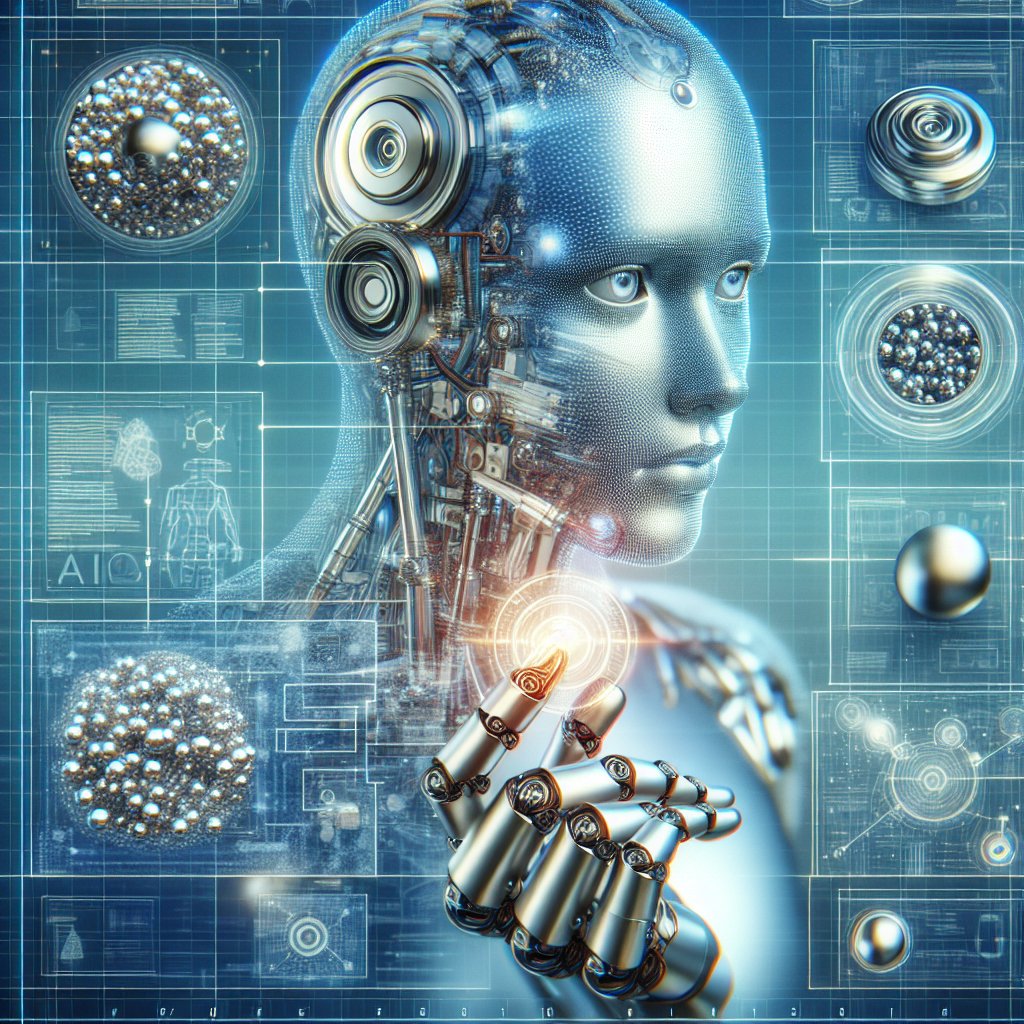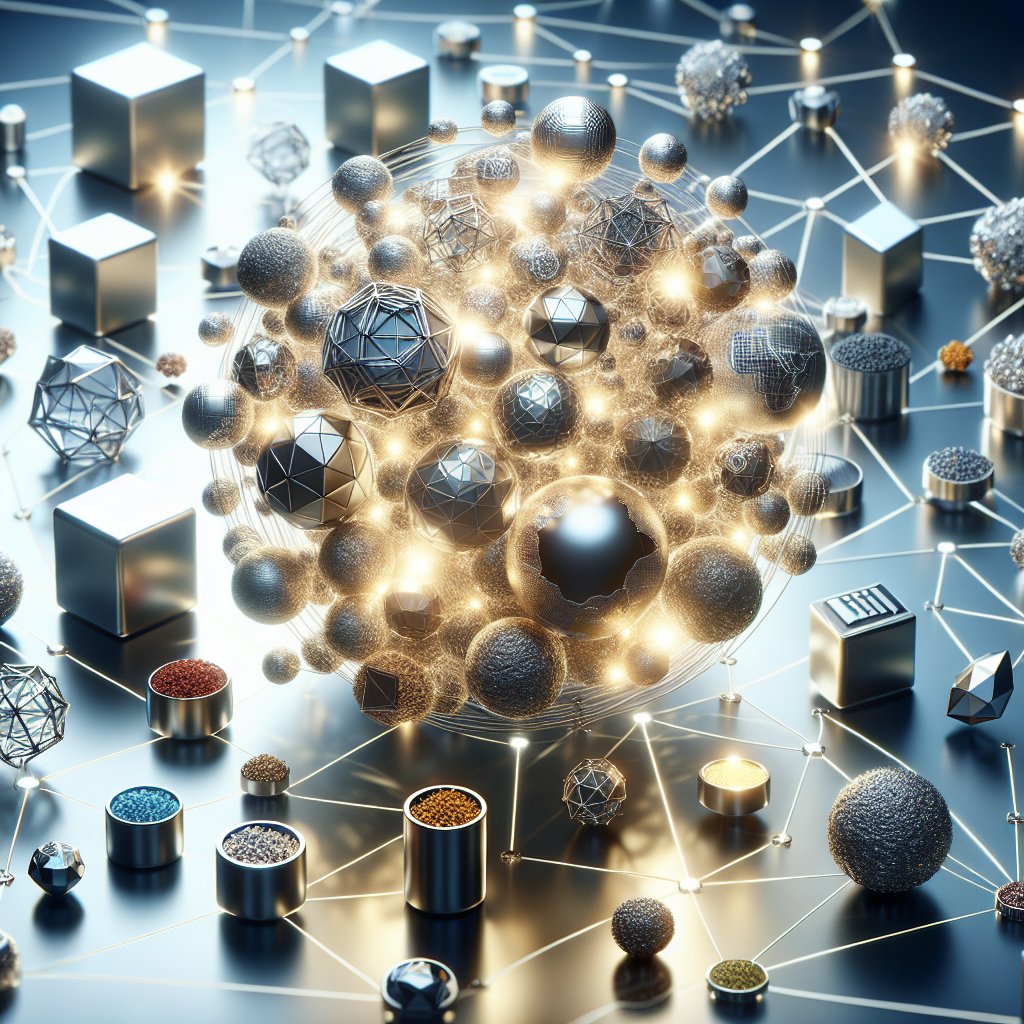Rare metals, often referred to as the “vitamins of modern industry,” are playing an increasingly pivotal role in the advancement of artificial intelligence (AI) and robotics. These metals, which include elements like lithium, cobalt, and rare earth elements, are essential components in the development of cutting-edge technologies that are shaping the future. As the demand for AI and robotics continues to surge, the importance of these rare metals cannot be overstated.
The Essential Role of Rare Metals in AI and Robotics
Rare metals are integral to the functionality and efficiency of AI and robotics technologies. These metals possess unique properties that make them indispensable in the production of high-performance electronic components. For instance, rare earth elements such as neodymium and dysprosium are crucial in the manufacturing of powerful magnets used in electric motors and generators. These magnets are essential for the operation of robots and AI-driven machinery, providing the necessary torque and efficiency required for advanced applications.
Moreover, lithium and cobalt are key components in the production of lithium-ion batteries, which power a wide range of devices from smartphones to electric vehicles. In the realm of AI and robotics, these batteries are vital for ensuring the mobility and autonomy of robots, as well as for powering AI-driven systems that require substantial computational resources. The high energy density and long cycle life of lithium-ion batteries make them the preferred choice for powering the next generation of AI and robotic technologies.
In addition to their use in batteries and magnets, rare metals are also critical in the production of semiconductors and sensors. Gallium and indium, for example, are used in the creation of semiconductors that form the backbone of AI processors and robotic control systems. These semiconductors enable the rapid processing of data and the execution of complex algorithms, which are essential for the operation of AI and robotic systems. Similarly, rare metals like tantalum and niobium are used in the production of capacitors and sensors, which are crucial for the precise control and monitoring of robotic systems.
Challenges in the Supply and Sustainability of Rare Metals
Despite their critical importance, the supply of rare metals is fraught with challenges. The extraction and processing of these metals are often concentrated in a few countries, leading to geopolitical tensions and supply chain vulnerabilities. For instance, China is a dominant player in the production of rare earth elements, controlling a significant portion of the global supply. This concentration of production can lead to supply disruptions and price volatility, which can have far-reaching implications for industries reliant on these metals.
Furthermore, the mining and processing of rare metals pose significant environmental and ethical challenges. The extraction of these metals often involves environmentally destructive practices, such as open-pit mining and the use of toxic chemicals, which can lead to habitat destruction and pollution. Additionally, the mining industry has been associated with human rights abuses, including poor working conditions and the exploitation of labor in developing countries.
To address these challenges, there is a growing emphasis on the development of sustainable and ethical sourcing practices for rare metals. This includes efforts to improve the efficiency of mining operations, reduce the environmental impact of extraction processes, and ensure fair labor practices. Additionally, there is a push towards the recycling and recovery of rare metals from electronic waste, which can help reduce the demand for newly mined materials and mitigate the environmental impact of mining activities.
The Future of Rare Metals in AI and Robotics
As AI and robotics continue to evolve, the demand for rare metals is expected to increase significantly. This presents both opportunities and challenges for the industry. On one hand, the growing demand for these metals can drive innovation and investment in the development of new technologies and applications. On the other hand, it also underscores the need for sustainable and responsible sourcing practices to ensure the long-term availability of these critical resources.
In the future, advancements in materials science and technology may lead to the development of alternative materials that can replace or reduce the reliance on rare metals. For example, researchers are exploring the use of nanomaterials and advanced composites that can offer similar or superior properties to rare metals. These innovations have the potential to revolutionize the field of AI and robotics, making these technologies more accessible and sustainable.
Moreover, the integration of AI and robotics in the mining and processing of rare metals can enhance the efficiency and sustainability of these operations. AI-driven systems can optimize mining processes, reduce waste, and improve the safety and working conditions of miners. Robotics can also play a role in automating labor-intensive tasks, reducing the need for human intervention and minimizing the risk of accidents.
In conclusion, rare metals are indispensable in powering the future of AI and robotics. While there are significant challenges associated with their supply and sustainability, there are also opportunities for innovation and progress. By embracing sustainable practices and investing in research and development, the industry can ensure the continued availability of these critical resources and support the growth of AI and robotics technologies.












